June 2020
Reasons for Experiencing Pain in the Ball of the Foot
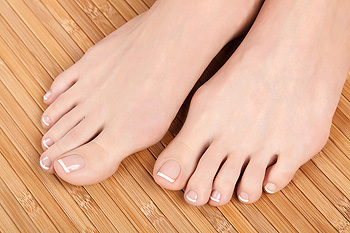 The ball of the foot is located between the arch of the foot and the toes, and it primarily contains metatarsal bones. While walking, weight is transferred from the heel to the ball of the foot, and an uneven weight transfer can cause pain and swelling in that area. As you get older, the fat pad at the bottom of the foot can wear away and cause shock to the ball of the foot. Pain in the ball of the foot can also be caused by high arches, obesity, arthritis, ill-fitting shoes, and wearing high heels too often. If you are looking to manage and limit this type of pain from becoming worse, please consult with a podiatrist for professional guidance.
The ball of the foot is located between the arch of the foot and the toes, and it primarily contains metatarsal bones. While walking, weight is transferred from the heel to the ball of the foot, and an uneven weight transfer can cause pain and swelling in that area. As you get older, the fat pad at the bottom of the foot can wear away and cause shock to the ball of the foot. Pain in the ball of the foot can also be caused by high arches, obesity, arthritis, ill-fitting shoes, and wearing high heels too often. If you are looking to manage and limit this type of pain from becoming worse, please consult with a podiatrist for professional guidance.
Foot Pain
Foot pain can be extremely painful and debilitating. If you have a foot pain, consult with Dr. Lee R. Stein from Lake Shore Foot & Ankle, PC. Our doctor will assess your condition and provide you with quality foot and ankle treatment.
Causes
Foot pain is a very broad condition that could be caused by one or more ailments. The most common include:
- Bunions
- Hammertoes
- Plantar Fasciitis
- Bone Spurs
- Corns
- Tarsal Tunnel Syndrome
- Ingrown Toenails
- Arthritis (such as Gout, Rheumatoid, and Osteoarthritis)
- Flat Feet
- Injury (from stress fractures, broken toe, foot, ankle, Achilles tendon ruptures, and sprains)
- And more
Diagnosis
To figure out the cause of foot pain, podiatrists utilize several different methods. This can range from simple visual inspections and sensation tests to X-rays and MRI scans. Prior medical history, family medical history, and any recent physical traumatic events will all be taken into consideration for a proper diagnosis.
Treatment
Treatment depends upon the cause of the foot pain. Whether it is resting, staying off the foot, or having surgery; podiatrists have a number of treatment options available for foot pain.
If you have any questions, please feel free to contact one of our offices located in Chicago, Highland Park, and Uptown, IL . We offer the newest diagnostic and treatment technologies for all your foot care needs.
What is Plantar Fasciitis?
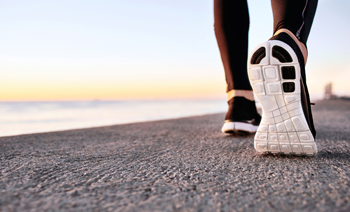 Plantar Fasciitis is the inflammation of the tissue, known as the plantar fascia, that connects the heel bone to the toes. This tissue is responsible for supporting the bones on the arch of the foot, as well as absorbing the strain that is put on the feet during exercises. The most common symptom of plantar fasciitis is pain in the heel bone, particularly where the plantar fascia connects to the heel bone. Pain is most commonly felt when getting up in the morning or after a long time of remaining stationary. Causes may include tight calf muscles, being overweight, high arches, or high impact activities such as hiking or running. For pain relief, it is suggested to rest and ice the affected area, and custom orthotics may be beneficial as well. If you are experiencing pain in your heel, it is recommended to see a podiatrist for a proper diagnosis and the best treatment options available.
Plantar Fasciitis is the inflammation of the tissue, known as the plantar fascia, that connects the heel bone to the toes. This tissue is responsible for supporting the bones on the arch of the foot, as well as absorbing the strain that is put on the feet during exercises. The most common symptom of plantar fasciitis is pain in the heel bone, particularly where the plantar fascia connects to the heel bone. Pain is most commonly felt when getting up in the morning or after a long time of remaining stationary. Causes may include tight calf muscles, being overweight, high arches, or high impact activities such as hiking or running. For pain relief, it is suggested to rest and ice the affected area, and custom orthotics may be beneficial as well. If you are experiencing pain in your heel, it is recommended to see a podiatrist for a proper diagnosis and the best treatment options available.
Plantar fasciitis is a common foot condition that is often caused by a strain injury. If you are experiencing heel pain or symptoms of plantar fasciitis, contact Dr. Lee R. Stein from Lake Shore Foot & Ankle, PC. Our doctor can provide the care you need to keep you pain-free and on your feet.
What Is Plantar Fasciitis?
Plantar fasciitis is one of the most common causes of heel pain. The plantar fascia is a ligament that connects your heel to the front of your foot. When this ligament becomes inflamed, plantar fasciitis is the result. If you have plantar fasciitis you will have a stabbing pain that usually occurs with your first steps in the morning. As the day progresses and you walk around more, this pain will start to disappear, but it will return after long periods of standing or sitting.
What Causes Plantar Fasciitis?
- Excessive running
- Having high arches in your feet
- Other foot issues such as flat feet
- Pregnancy (due to the sudden weight gain)
- Being on your feet very often
There are some risk factors that may make you more likely to develop plantar fasciitis compared to others. The condition most commonly affects adults between the ages of 40 and 60. It also tends to affect people who are obese because the extra pounds result in extra stress being placed on the plantar fascia.
Prevention
- Take good care of your feet – Wear shoes that have good arch support and heel cushioning.
- Maintain a healthy weight
- If you are a runner, alternate running with other sports that won’t cause heel pain
There are a variety of treatment options available for plantar fasciitis along with the pain that accompanies it. Additionally, physical therapy is a very important component in the treatment process. It is important that you meet with your podiatrist to determine which treatment option is best for you.
If you have any questions, please feel free to contact one of our offices located in Chicago, Highland Park, and Uptown, IL . We offer the newest diagnostic and treatment technologies for all your foot care needs.
Gout Pain Can Be Managed
Foot Conditions That May Affect the Elderly
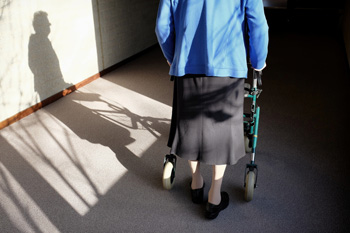 Many feet can develop problems, especially those of the elderly after supporting their own body weight for their entire lives. Not only have many older feet experienced overuse, but older cells also hold less water, leading to tightened tendons and loosened ligaments. Some foot problems that seniors may experience include bunions, arthritis, heel pain, fungal infections, and hammertoes. Inactive seniors can experience vascular disease and foot problems related to diabetes as well. In order to prevent these issues and allow seniors to be active, the assistance of a podiatrist may be needed. A podiatrist will be able to provide preventative measures as well as treatment methods to already present injuries. If you or a loved one is experiencing foot pain, please speak with a podiatrist for professional care.
Many feet can develop problems, especially those of the elderly after supporting their own body weight for their entire lives. Not only have many older feet experienced overuse, but older cells also hold less water, leading to tightened tendons and loosened ligaments. Some foot problems that seniors may experience include bunions, arthritis, heel pain, fungal infections, and hammertoes. Inactive seniors can experience vascular disease and foot problems related to diabetes as well. In order to prevent these issues and allow seniors to be active, the assistance of a podiatrist may be needed. A podiatrist will be able to provide preventative measures as well as treatment methods to already present injuries. If you or a loved one is experiencing foot pain, please speak with a podiatrist for professional care.
Proper foot care is something many older adults forget to consider. If you have any concerns about your feet and ankles, contact Dr. Lee R. Stein from Lake Shore Foot & Ankle, PC. Our doctor can provide the care you need to keep you pain-free and on your feet.
The Elderly and Their Feet
As we age we start to notice many changes in our body, but the elder population may not notice them right away. Medical conditions may prevent the elderly to take notice of their foot health right away. Poor vision is a lead contributor to not taking action for the elderly.
Common Conditions
- Neuropathy – can reduce feeling in the feet and can hide many life-threatening medical conditions.
- Reduced flexibility – prevents the ability of proper toenail trimming, and foot cleaning. If left untreated, it may lead to further medical issues.
- Foot sores – amongst the older population can be serious before they are discovered. Some of the problematic conditions they may face are:
- Gouging toenails affecting nearby toe
- Shoes that don’t fit properly
- Pressure sores
- Loss of circulation in legs & feet
- Edema & swelling of feet and ankles
Susceptible Infections
Diabetes and poor circulation can cause general loss of sensitivity over the years, turning a simple cut into a serious issue.
If you have any questions please feel free to contact one of our offices located in Chicago, Highland Park, and Uptown, IL . We offer the newest diagnostic and treatment technologies for all your foot and ankle needs.
How Does Gout Occur?
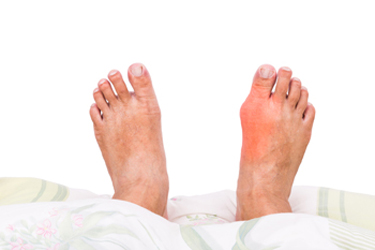 Debilitating pain in the big toe and surrounding area may be indicative of a medical condition that is known as gout. It causes the joints to become inflamed. Additional symptoms can include redness and heat that radiates from the affected area. There are several reasons why gout can develop. These can include genetic factors, kidney disease, and eating foods that have elevated purine levels. These types of foods can cause uric acid levels in the blood to increase, and it is suggested to eliminate them from your diet.. Foods of this nature can consist of red meat, shellfish, and drinks that are made with large amounts of sugar. Relief from gout attacks may be found when the joint pain is controlled. If you are suffering from gout, it is strongly advised that you are under the care of a podiatrist who can help you to manage this painful condition.
Debilitating pain in the big toe and surrounding area may be indicative of a medical condition that is known as gout. It causes the joints to become inflamed. Additional symptoms can include redness and heat that radiates from the affected area. There are several reasons why gout can develop. These can include genetic factors, kidney disease, and eating foods that have elevated purine levels. These types of foods can cause uric acid levels in the blood to increase, and it is suggested to eliminate them from your diet.. Foods of this nature can consist of red meat, shellfish, and drinks that are made with large amounts of sugar. Relief from gout attacks may be found when the joint pain is controlled. If you are suffering from gout, it is strongly advised that you are under the care of a podiatrist who can help you to manage this painful condition.
Gout is a foot condition that requires certain treatment and care. If you are seeking treatment, contact Dr. Lee R. Stein from Lake Shore Foot & Ankle, PC. Our doctor will treat your foot and ankle needs.
What Is Gout?
Gout is a type of arthritis caused by a buildup of uric acid in the bloodstream. It often develops in the foot, especially the big toe area, although it can manifest in other parts of the body as well. Gout can make walking and standing very painful and is especially common in diabetics and the obese.
People typically get gout because of a poor diet. Genetic predisposition is also a factor. The children of parents who have had gout frequently have a chance of developing it themselves.
Gout can easily be identified by redness and inflammation of the big toe and the surrounding areas of the foot. Other symptoms include extreme fatigue, joint pain, and running high fevers. Sometimes corticosteroid drugs can be prescribed to treat gout, but the best way to combat this disease is to get more exercise and eat a better diet.
If you have any questions please feel free to contact one of our offices located in Chicago, Highland Park, and Uptown, IL . We offer the newest diagnostic and treatment technologies for all your foot and ankle needs.
How Can I Stretch My Feet?
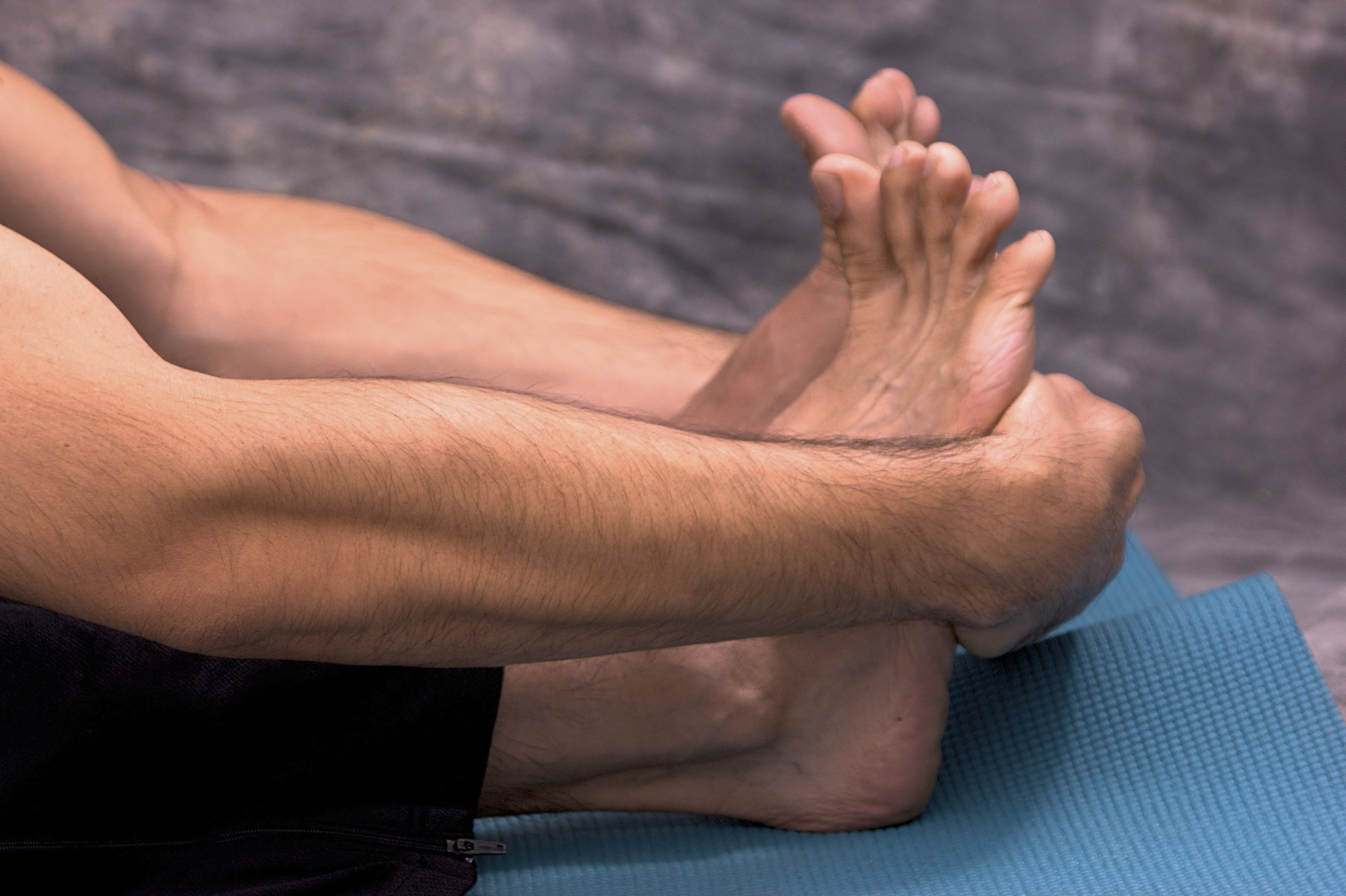 The feet endure the weight of the body, and many people experience aches and pains in their feet as a result from standing or walking for long periods of time. Injuries may be prevented and the feet can generally feel better when foot stretches are performed. An effective stretch is referred to as a towel stretch. This is practiced by placing a towel around your toes while seated with your legs straight. A gentle stretch can be obtained when the towel is slowly pulled towards you. An Achilles tendon stretch is performed by standing on a step, and carefully lowering one heel at a time. The toes can become stronger when they are spread apart while sitting in a chair, and releasing after several seconds. If you would like additional information about the benefits of stretching your feet, please consult with a podiatrist.
The feet endure the weight of the body, and many people experience aches and pains in their feet as a result from standing or walking for long periods of time. Injuries may be prevented and the feet can generally feel better when foot stretches are performed. An effective stretch is referred to as a towel stretch. This is practiced by placing a towel around your toes while seated with your legs straight. A gentle stretch can be obtained when the towel is slowly pulled towards you. An Achilles tendon stretch is performed by standing on a step, and carefully lowering one heel at a time. The toes can become stronger when they are spread apart while sitting in a chair, and releasing after several seconds. If you would like additional information about the benefits of stretching your feet, please consult with a podiatrist.
Why Stretching Is Important for Your Feet
Stretching the feet is a great way to prevent injuries. If you have any concerns with your feet consult with Dr. Lee R. Stein from Lake Shore Foot & Ankle, PC. Our doctor will assess your condition and provide you with quality foot and ankle treatment.
Stretching the Feet
Stretching the muscles in the foot is an important part in any physical activity. Feet that are tight can lead to less flexibility and make you more prone to injury. One of the most common forms of foot pain, plantar fasciitis, can be stretched out to help ease the pain. Stretching can not only ease pain from plantar fasciitis but also prevent it as well. However, it is important to see a podiatrist first to determine if stretching is right for you. Podiatrists can also recommend other ways to stretch your feet. Once you know whether stretching is right for you, here are some excellent stretches you can do.
- Using a foam roller or any cylindrical object (a water bottle or soda can will do), roll the object under your foot back and forth. You should also exert pressure on the object. Be sure to do this to both feet for a minute. Do this exercise three times each.
- Similar to the previous exercise, take a ball, such as a tennis ball, and roll it under your foot while seated and exert pressure on it.
- Grab a resistance band or towel and take a seat. If you are using a towel, fold it length wise. Next put either one between the ball of your foot and heel and pull with both hands on each side towards you. Hold this for 15 seconds and then switch feet. Do this three times for each foot.
- Finally hold your big toe while crossing one leg over the other. Pull the toe towards you and hold for 15 seconds. Once again do this three times per foot.
It is best to go easy when first stretching your foot and work your way up. If your foot starts hurting, stop exercising to ice and rest the foot. It is advised that you then see a podiatrist for help.
If you have any questions, please feel free to contact one of our offices located in Chicago, Highland Park, and Uptown, IL . We offer the newest diagnostic and treatment technologies for all your foot care needs.
Blog Archives
- April 2025
- March 2025
- February 2025
- January 2025
- December 2024
- November 2024
- October 2024
- September 2024
- August 2024
- July 2024
- June 2024
- May 2024
- April 2024
- March 2024
- February 2024
- January 2024
- December 2023
- November 2023
- October 2023
- September 2023
- August 2023
- July 2023
- June 2023
- May 2023
- April 2023
- March 2023
- February 2023
- January 2023
- December 2022
- November 2022
- October 2022
- September 2022
- August 2022
- July 2022
- June 2022
- May 2022
- April 2022
- March 2022
- February 2022
- January 2022
- December 2021
- November 2021
- October 2021
- September 2021
- August 2021
- July 2021
- June 2021
- May 2021
- April 2021
- March 2021
- February 2021
- January 2021
- December 2020
- November 2020
- October 2020
- September 2020
- August 2020
- July 2020
- June 2020
- May 2020
- April 2020
- March 2020
- February 2020
- January 2020
- December 2019
- November 2019
- October 2019
- September 2019
- August 2019
- July 2019
- June 2019
- May 2019
- April 2019
- March 2019
- February 2019
- January 2019
- December 2018
- November 2018
- October 2018
- September 2018
- August 2018
- July 2018








